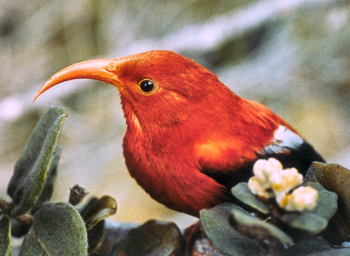
This page last revised 05 January 2009 -- S.M.Gon III
Introduction
Ecoregion
Conservation Targets
Viability
Goals
Portfolio
TNC Action Sites
Threats
Strategies
Acknowledgements
▫
Tables
Maps & Figures
CPT Database
Appendices
Glossary
Sources
.
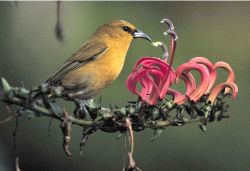
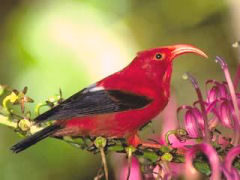
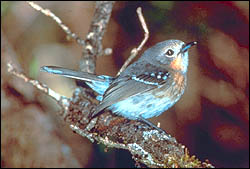
'Elepaio,a Hawaiian flycatcher, is a member of the forest bird concentration.
Hawaiian Forest BirdConcentrations
The distinctiveavifaunaassociated with Hawaiian forests are celebrated in books and articleson insular evolution (e.g. Wagner &Funk 1995, Pratt et al 2005).The forest birds of Hawai‘i include not only the endemicHawaiianhoneycreepers (Family Fringillidae, Subfamily Drepanidinae), but othergroups such as Hawaiian thrushes, and flycatchers.
Forest bird concentrations as conservation targets were defined as anyassemblage of six or more viable endemic forest bird species occupyingan area of greater than 5 square kilometers. When the distribution anddensities of forest birds were assessed across the ecoregion (e.g., Gorresen et al, 2005),seven concentrations emerged.
(continued next column)
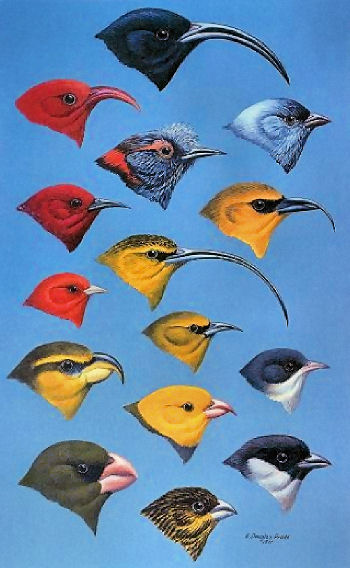 Hawaiian honeycreeperbill diversity -- H.D. Pratt
Hawaiian honeycreeperbill diversity -- H.D. Pratt
Forest bird concentrations as conservation targets were defined as anyassemblage of six or more viable endemic forest bird species occupyingan area of greater than 5 square kilometers. When the distribution anddensities of forest birds were assessed across the ecoregion (e.g., Gorresen et al, 2005),seven concentrations emerged.(continued next column)
Hawaiian Forest BirdConcentrations
Forest bird concentrations occur on three islands,and three out of four stratificationunits.The majority of the concentrations are found on Hawai‘iIsland,reflecting the large remaining expanses of forest habitat there. Forestbird concentrations typically occupy the montane wet and montane mesicecological systems, sometimes extending across conservation areaboundaries. Not surprisingly, islands lacking substantial montaneecological systems do not support viable forest bird concentrations.The conservationareas bearing forest bird concentrations are listed below.

Forest bird concentrations occur on three islands,and three out of four stratificationunits.The majority of the concentrations are found on Hawai‘iIsland,reflecting the large remaining expanses of forest habitat there. Forestbird concentrations typically occupy the montane wet and montane mesicecological systems, sometimes extending across conservation areaboundaries. Not surprisingly, islands lacking substantial montaneecological systems do not support viable forest bird concentrations.The conservationareas bearing forest bird concentrations are listed below.

KAUAI STRATIFICATION UNIT
Kaua‘i
O‘AHUSTRATIFICATION UNIT
[none]
MAUINUI STRATIFICATION UNIT
East Maui
HAWAI‘ISTRATIFICATION UNIT
Mauna Kea
Windward Mauna Loa
Ka‘u - Kapapala
Kona
Pohakuloa - Pu‘u Wa‘awa‘a
See maps below

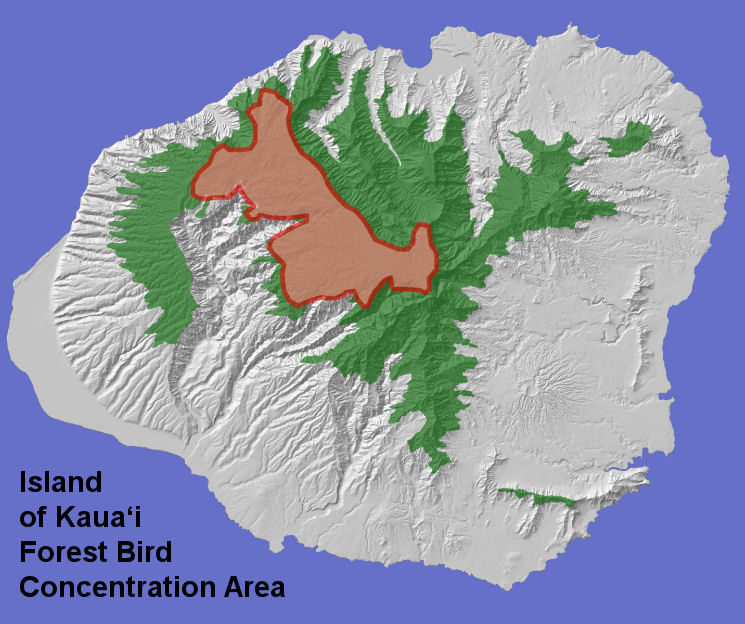
The forest birdconcentration on Kaua‘i is restricted to montane wet and montanemesic portions of the central Alaka‘i plateau.
MAUI NUI STRATIFICATION UNIT
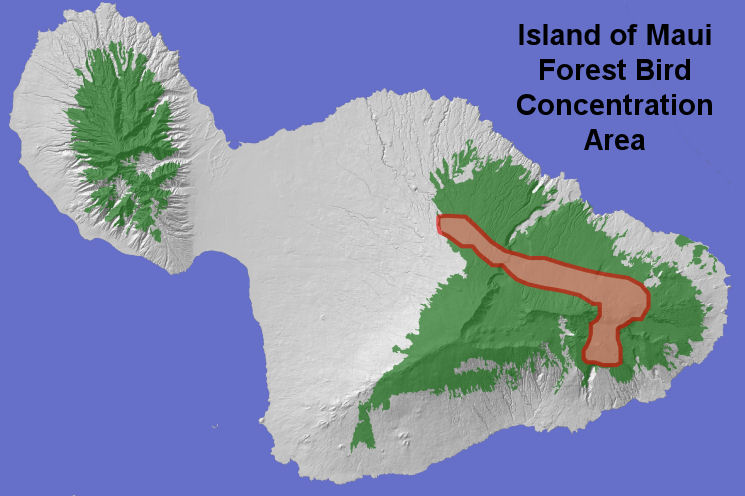
The forest bird concentration on Maui occupies the montane wet and montane mesic bands across windward East Maui.
HAWAI‘I STRATIFICATION UNIT
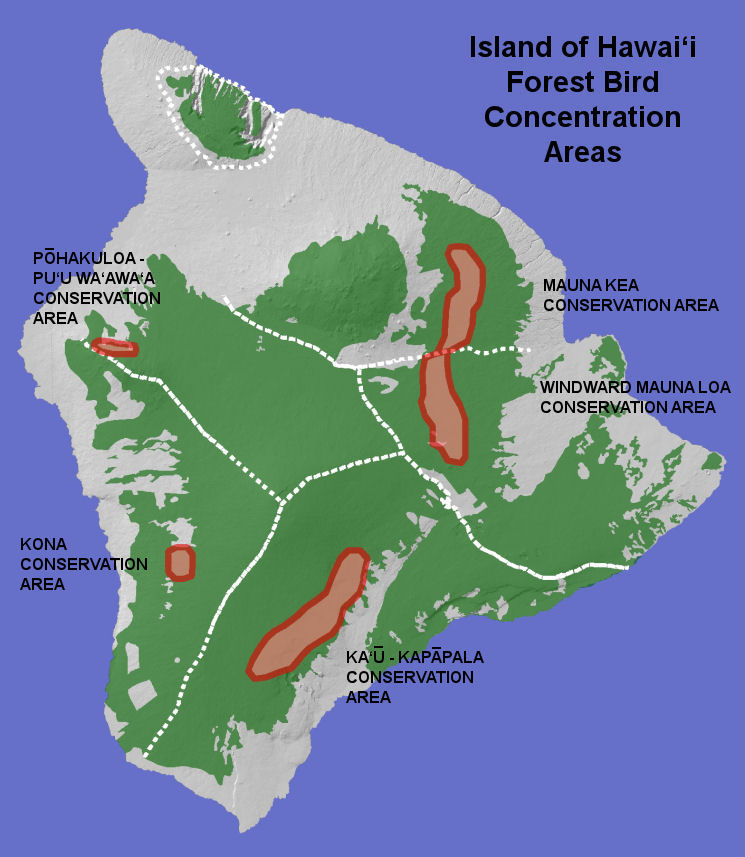
There are fourforest bird concentrations on the island of Hawai‘i. The largestof these straddles the Mauna Kea and Windward Mauna Loa ConservationAreas.
The next largest occupies a portion of the montane wet and montanemesic ecological systems of the Ka‘u - Kapapala ConservationArea. The remaining two forest bird concentrations are much smaller,occupying a portion of the mesic forest of Hualalai volcano in thePohakuloa - Pu‘u Wa‘awa‘a Conservation Area, and theother in a node of forest bird richness in the Kona ConservationArea. Notethat these concentrations do not delimit all forest bird species,but represent the highest concentrations of species and foci forconservation efforts.
